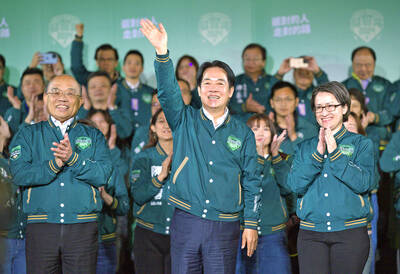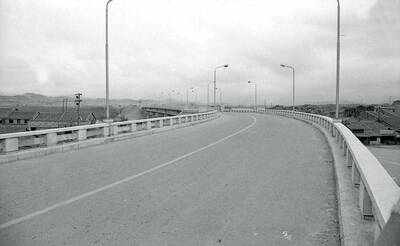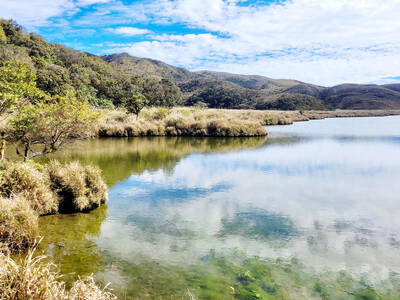Every lawyer, politician and historian in Europe and America remembers Nuremberg, the trial of surviving Nazi leaders after World War II. Few remember Tokyo, the international tribunal that arraigned the surviving Japanese leadership. And yet Tokyo lasted for more than two years (1946-8), as against Nuremberg’s brisk 11 months (1945-6), produced a far taller mountain of documents and — in contrast to the German trial — found every single defendant guilty.
The Tokyo judges intended to build on Nuremberg’s achievement, laying wider foundations for the code and practice of international law. But almost the only living and active memory of their efforts today is one dissenting opinion: the astonishing rejection of the tribunal itself and much of its evidence by the Indian judge, Radhabinod Pal. His views, in recklessly distorted and exaggerated versions, remain holy writ for Japan’s extreme nationalists to this day.
’LONG COLLIESHANGIE’

Pal was not the only dissenting judge. The verdicts and sentences (seven of the 28 defendants were hanged) rested on a fairly precarious majority, cobbled together by the short-tempered Australian court president, William Webb, in alliance with the “British and Commonwealth bloc” of judges.
The prosecution team was headed by a blundering American alcoholic, Joseph Keenan, whose performance embarrassed everyone. (His British deputy, the “brainy” hardliner Arthur Comyns Carr, fumed at having to “act as an inebriate house attendant”).
The defending advocates were an under-equipped mixture of Japanese lawyers and Americans flown in to cover their lack of English. The Soviet judge, in the usual Russian manner, treated the defenders as if they were defendants, and scolded them as propagandists for fascist imperialism. There were times when the trial seemed close to breakdown, as judges and prosecutors squabbled, and the Scottish judge, William Patrick, despaired over this “long collieshangie” (Scots dictionary: “noisy dispute, uproar, a dog-fight”). But when the British bloc proposed sacking Webb and Keenan, they collided with General Douglas MacArthur, supreme commander in Japan, who “stopped the British cold.”
For him, their plan was “a dastardly act to stab a man in the back.”
MacArthur was totally in charge of occupied Japan, in a way that no American had dominated occupied Germany. This was because the war had ended so differently. Nazi Germany was extinguished in battle; Japan surrendered to a negotiation proposal which — after Hiroshima and Nagasaki — became an offer it couldn’t refuse. The deal would leave a skeleton of Japanese institutions intact, above all the position of Emperor Hirohito. But war criminals would be punished. It was MacArthur who ordered the arrests and proclaimed the establishment of the International Military Tribunal. Meanwhile, as Gary Bass relates, he imposed liberal reforms including freedoms of speech and organization, rights for women and abolition of the state Shinto cult.
As for the tribunal, MacArthur’s original hope seems to have been for a rapid American trial that would concentrate on Japan’s 1941 attack on Pearl Harbor and treat the US navy dead as victims of an act of murder. But President Truman was able to overrule him and widen the project into an international examination of aggressive war as a crime, and of imperial Japan’s horrific record of “crimes against humanity.” The prosecution reached back as far the Japanese invasion of Manchuria in 1931 and the 14-year war with China — including the vast Nanjing massacre — before moving on to the Pacific war that exploded at Pearl Harbor on 7 December 1941.
DOUBTS
But almost from the start, the court was plagued by doubts about its own legality. In July 1945, the victorious allies had issued the Potsdam Declaration, which Bass calls “one of the most brutal statements ever pronounced by any democratic government.”
They demanded “complete disarmament, the permanent removal of expansionist Japanese leaders who had sought ‘world conquest,’ and the disbanding of the empire.”
Otherwise, they would inflict “the complete destruction of the Japanese armed forces and just as inevitably the devastation of the Japanese homeland.” (America’s possession of the atomic bomb was still a secret.) But was Potsdam enough to justify the court classifying the planning and launching of aggressive war as a crime?
Some members of the court sought an international law precedent in the 1928 Kellogg-Briand Pact, which grandly if vaguely outlawed war but failed to define aggression as criminal. The French judge invoked “natural law,” the “universal conscience,” as a better basis. In the end, the judges never agreed on how to describe their right to try individuals for crimes against peace or humanity. The majority simply dropped the subject and hoped for the best.
The Japanese response to the charges of aggressive war was broadly that they had fought in self-defense. The invasion of China, the accused argued, was necessary to stave off the threat of communism advancing eastwards from the Soviet Union. As Bass emphasizes, the tribunal was sitting during the first Berlin confrontation of the cold war, which had not yet developed when the Nuremberg trial took place.
Even more dramatically, the defenders argued that Pearl Harbor, and Japan’s simultaneous attacks on French Indochina, the Dutch East Indies and the British empire in Burma and Malaya, were also defensive. Surrounded by a tightening ring of hostile powers, Japan was being strategically and economically strangled to death; surely international law allowed a state to take military action against the threat of its own extinction.
Japan, without oil resources of its own, had imported petroleum from Burma, from the Dutch empire, and above all from the US. But in July 1941, when Japanese forces moved into southern Indochina, America declared an almost total trade boycott, including an oil embargo.
Tojo Hideki, the belligerent army minister who now became premier, warned: “Two years from now, we will have no petroleum for military use… ships will stop moving.”
Secretly, the Japanese leadership concluded that war with America might be the only way to ensure national survival. Tension mounted until, on Nov. 26, Cordell Hull, President Roosevelt’s secretary of state, sent a note requiring Japan to pull out of China and Indochina — and break its tripartite treaty with Hitler and Mussolini — as the price for lifting the embargo. Some defenders called the Hull note a declaration of war, suggesting that the US wanted war but provoked Japan into taking the first action. In fact, Japan’s battle fleet had set off for Pearl Harbor on the very day that Hull’s note was delivered.
A second spurious plea claimed that the Pacific war had been a Japanese crusade to liberate Asia from European colonialism. But Bass shows that Japan’s “Greater East Asia Co-Prosperity Sphere” in the conquered empires was a mask for ruthless exploitation, while most of the many thousands of victims of Japanese atrocities were not white imperialists but Asian peasants.
In court, accused leaders and commanders denied ordering or even knowing about these massacres and tortures. Evidence for the maltreatment of allied prisoners of war was clear — and often traceable back to Tojo’s own directives. But “for all the hideous abundance of evidence of conventional war crimes, the prosecution had more difficulty linking these deeds to the defendants.” The court fell back on “chain of command” convictions: a leader bore guilt for crimes in his area of responsibility whether he was provably aware of them or not.
LIVELY TELLING
Bass has written a massively long and detailed book, always lively and judgmental. He brings out not only the legal arguments, but the color of the great tribunal itself: sharp sketches of the protagonists, of the stress on the multinational judges penned up month after month in the Imperial hotel, of Tojo Hideki among the seven shabby old men shuffling to the gallows in Sugamo prison.
He shows warm sympathy for Togo Shigenori, the foreign minister, who dared to argue again and again for peace and against a war he knew Japan could not win (he died in prison). And Bass gives a balanced account of Radhabinod Pal’s “titanic” dissent.
Pal alone pointed out the racism and hypocrisy implicit in the trial. Colonial empires were accusing another colonial empire of doing what they had done themselves; some of the judging powers had blatantly launched aggressive wars; why were Japanese atrocities “crimes against humanity” but not the American fire-obliteration of Tokyo and use of atomic bombs on civilians? As Bass points out, Pal lamely excused Japanese expansionism, but expressed unequivocal horror at the atrocities (his Japanese admirers today leave out those passages).
Hovering above the trial was an absence. Most people in Europe and America, and some of the judges, thought that Emperor Hirohito should be in the dock, if not on the gallows. He had presided over all the imperial conferences leading up to the war. But the surrender deal meant that he was untouchable, and MacArthur’s men instructed the lawyers to keep his role out of the proceedings.
Not all of them did. The accused loyally insisted that the divine Hirohito had held no control over their decisions, until Tojo put his foot in it by saying that “no Japanese subject would go against the will of His Majesty.”
In the years to come, the emperor appeared genuinely pained about the past, and yet ambiguous. When he listened to the death sentences on the radio, “the Imperial Palace only let it be known that he sighed and looked mournful.”

Last week, Viola Zhou published a marvelous deep dive into the culture clash between Taiwanese boss mentality and American labor practices at the Taiwan Semiconductor (TSMC) plant in Arizona in Rest of World. “The American engineers complained of rigid, counterproductive hierarchies at the company,” while the Taiwanese said American workers aren’t dedicated. The article is a delight, but what it is depicting is the clash between a work culture that offers employee autonomy and at least nods at work-life balance, and one that runs on hierarchical discipline enforced by chickenshit. And it runs on chickenshit because chickenshit is a cultural

My previous column Donovan’s Deep Dives: The powerful political force that vanished from the English press on April 23 began with three paragraphs of what would be to most English-language readers today incomprehensible gibberish, but are very typical descriptions of Democratic Progressive Party (DPP) internal politics in the local Chinese-language press. After a quiet period in the early 2010s, the English press stopped writing about the DPP factions, the factions changed and eventually local English-language journalists could not reintroduce the subject without a long explanation on the context that would not fit easily in a typical news article. That previous

April 29 to May 5 One month before the Taipei-Keelung New Road (北基新路) was set to open, the news that US general Douglas MacArthur had died, reached Taiwan. The military leader saw Taiwan as an “unsinkable aircraft carrier” that was of huge strategic value to the US. He’d been a proponent of keeping it out of Chinese Communist Party (CCP) hands. Coupled with the fact that the US had funded more than 50 percent of the road’s construction costs, the authorities at the last minute renamed it the MacArthur Thruway (麥帥公路) for his “great contributions to the free world and deep

Years ago, I was thrilled when I came across a map online showing a fun weekend excursion: a long motorcycle ride into the mountains of Pingtung County (屏東) going almost up to the border with Taitung County (台東), followed by a short hike up to a mountain lake with the mysterious name of “Small Ghost Lake” (小鬼湖). I shared it with a more experienced hiking friend who then proceeded to laugh. Apparently, this road had been taken out by landslides long before and was never going to be fixed. Reaching the lake this way — or any way that would